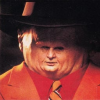-
barsoap
-
 SanguineBrah
SanguineBrah -
FeralTofu
-
Eheran
-
eggymachus
-
4b4a99
-
 Deceptichum
Deceptichum -
AtmaJnana
-
ClamDrinker